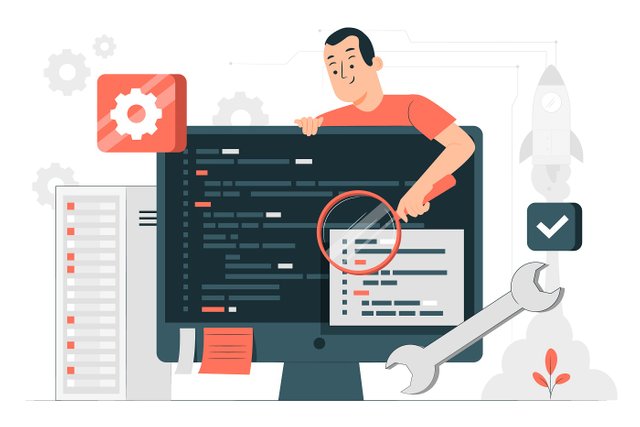In the fast-paced world of software development, ensuring the timely delivery of high-quality software is paramount. Traditionally, software testing has been performed towards the end of the development process, but this approach often leads to the detection of bugs late in the development lifecycle, resulting in costly and time-consuming fixes. To address this issue, "Shift-Left Testing" has emerged as a best practice in software testing, emphasizing the early detection of defects and potential cost savings. In this insightful content, we will explore the concept of Shift-Left Testing, its benefits, and the best practices and approaches to implement it successfully.

Understanding Shift-Left Testing
Shift-Left Testing is a strategic shift in the software testing process, advocating the involvement of testing activities much earlier in the development lifecycle. The term "Shift-Left" signifies moving testing towards the left-hand side of the development timeline, meaning testing starts as soon as possible after the initial stages of design and development. By adopting this approach, developers and testers work collaboratively from the beginning, leading to the early detection of defects and issues.
The Benefits of Shift-Left Testing:
- Early Defect Detection: One of the primary benefits of Shift-Left Testing is the early identification of bugs. By starting testing activities early, issues can be discovered and resolved when they are less complex and expensive to fix. This reduces the chances of critical defects reaching production and improves the overall software quality.
- Cost Savings: When bugs are detected and fixed early in the development process, it results in significant cost savings. Fixing defects at later stages can be time-consuming and may require rework of various components, impacting the project's budget and timelines.
- Improved Collaboration: Shift-Left Testing fosters collaboration between development and testing teams. Close communication and mutual understanding lead to better requirements analysis, reduced misunderstandings, and improved cooperation throughout the development lifecycle.
- Faster Time-to-Market: Early detection of bugs and efficient collaboration accelerates the development process, reducing time-to-market. With shorter release cycles, organizations can respond more swiftly to market demands and stay competitive.
- Enhanced Customer Satisfaction: Delivering high-quality software with fewer defects enhances customer satisfaction. Early detection and resolution of issues result in a smoother user experience and build customer trust in the software product.
Best Practices for Shift-Left Testing:
- Implement Test Automation: QA automation testing plays a crucial role in successful Shift-Left Testing. Automated tests can be executed more frequently and quickly, providing rapid feedback to developers about the health of the codebase. It is essential to identify the right test scenarios for automation and create a robust automated testing suite.
- Encourage Collaboration: Facilitate open and frequent communication between developers and testers. Encourage participation from both sides during design and requirement discussions. This collaborative approach helps in understanding each other's perspectives and requirements better, resulting in improved test cases.
- Define Clear Testing Objectives: Establish clear testing objectives and goals from the early stages of the project. Identify critical functionalities, high-risk areas, and business-critical scenarios to focus testing efforts effectively.
- Integrate Testing with Continuous Integration (CI): Integrate testing activities with the CI pipeline to ensure automated tests are executed automatically with each code commit. This not only helps in continuous feedback but also prevents the introduction of regressions into the codebase.
- Shift Performance Testing Left: Performance testing is often overlooked until late in the development process, leading to last-minute performance issues. By incorporating performance testing early, you can identify and resolve performance bottlenecks in the application architecture, saving time and resources.
- Incorporate Static Code Analysis: Use static code analysis tools to detect code quality issues, security vulnerabilities, and potential defects at the source code level. By addressing these issues early, you can prevent issues from propagating into later stages.
- Establish a Test-First Mindset: Encourage the adoption of a test-first mindset, where developers write tests before implementing the code. This practice ensures that the code meets the specified requirements and that potential defects are identified early.
- Continuous Feedback and Retrospectives: Conduct regular retrospectives to assess the effectiveness of Shift-Left Testing practices and make continuous improvements. Collect feedback from the development and testing teams to address any bottlenecks or challenges in the process.
Approaches to Implement Shift-Left Testing:
- Risk-Based Testing: Prioritize testing efforts based on the risks associated with different functionalities and features. Focus on critical and high-risk areas early in the development process to uncover defects that could have severe consequences if left undetected.
- Test-Driven Development (TDD): Adopt Test-Driven Development, where tests are written before the code is implemented. TDD ensures that the code meets the specified requirements and provides immediate feedback on the correctness of the implementation.
- Behavior-Driven Development (BDD): BDD encourages collaboration between stakeholders, testers, and developers by using a common language to define requirements and acceptance criteria. It helps ensure that the software aligns with business goals and improves test case quality.
- Continuous Testing with CI/CD: Integrate testing into the CI/CD pipeline to automate the execution of test cases with each code change. Automated tests provide immediate feedback, allowing teams to catch defects early and ensure consistent software quality.
- Early Exploratory Testing: Conduct exploratory testing sessions early in the development process to uncover usability and user experience issues. Exploratory testing complements scripted testing and encourages creativity in identifying potential defects.
Conclusion
Shift-Left Testing in software development is a powerful approach that brings together developers and testers to detect defects early in the development lifecycle. By incorporating testing activities from the beginning, organizations can save costs, enhance software quality, and deliver high-quality products to market faster. Through the adoption of best practices and approaches like test automation, collaboration, and continuous testing, organizations can embrace the benefits of Shift-Left Testing and remain competitive in the ever-evolving software development landscape.